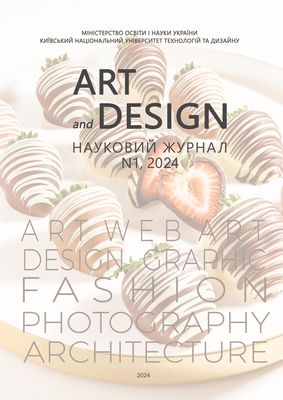PROPERTIES THAT REVEAL THE EXPRESSION OF PROJECT GRAPHICS
DOI:
https://doi.org/10.30857/2617-0272.2024.1.7Keywords:
emotional response, visualization, subjective properties of form, graphic design, Project graphicsAbstract
Purpose. The research aims to identify and systematize the primary means of enhancing the expressiveness of images within the system of visual communication, characterized by a subjective evaluation of the quality of the work, establishing patterns and priorities for the application of techniques of graphic representation of expressive qualities in representative and communicative tasks.
Methodology. The research utilized analysis of information sources in graphic design, psychology of perception, composition theory, structural and systemic analysis of graphic works, and synthesis of research results.
Results. In contemporary design practice, project graphics serve as the primary means of conveying the value of an idea to the user, revealing its most important aspects during the stages of presenting the properties of the depicted object. Many exemplary works of graphic art prove the thesis that the effectiveness of visual communication depends not only on the correctness of the expression, which is determined by the spectrum of means of modelling the objective properties of an object, but also on the ability of the graphic form to evoke predictable emotions. This work examines the influence on the aesthetic evaluation of such components of image construction as graphic techniques, level of formalization and stylization, spatial composition, chosen perspectives, and lighting. The patterns of the application of techniques for modelling expressive qualities in the system of graphic design tasks are established.
Scientific novelty. The study significantly expands and systematizes the nomenclature of expressive means for conveying the subjective properties of form in graphic design and establishes patterns in using techniques to enhance emotional impact.
The practical significance of the obtained results lies in the possibility of applying them in the practice of design, the educational process of training specialists in artistic and creative fields, and further research in cultural studies, architecture and design.

